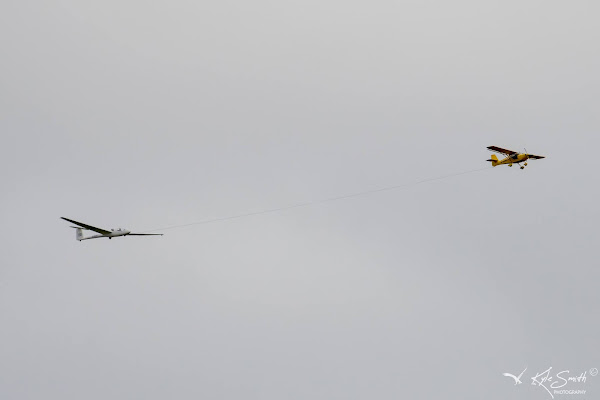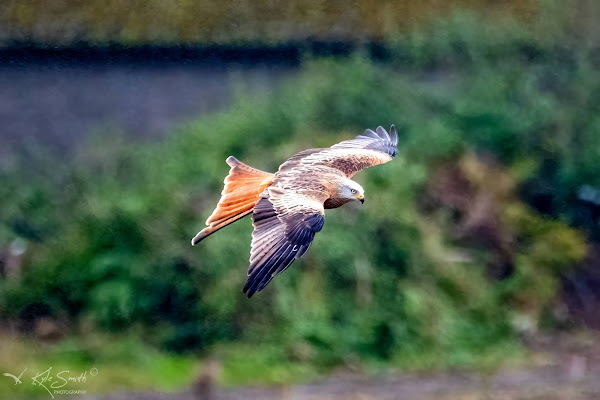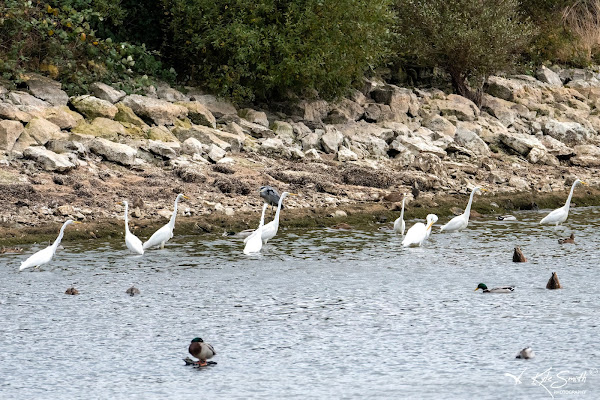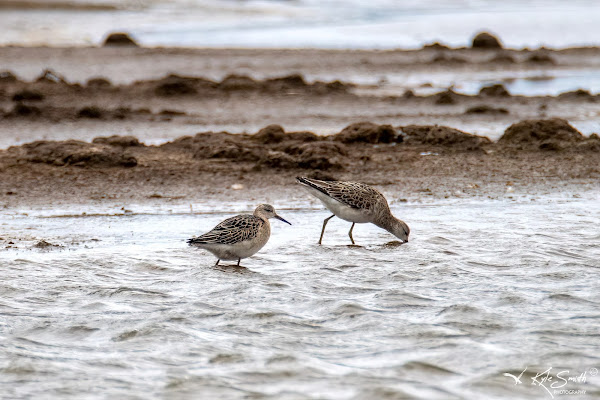Travelling for work has been a part of life over the last three decades but the last 18 months have been a great break from it all. It had to come to an end, and so I spent the last week working in Spain, with extra hurdles to the usual ones; Spanish Health Certificate, Covid Vaccination Certificate, a medical to enter the factory, passenger locator form for the return flight and a Day 2 Covid test (clear). I keep testing but am glad I can now get outside and do a bit of birding.
Saturday started cold, windy and snowy. I decided to stay in and read while the rest of the family were still in bed. They passed through one by one, but all made for the warmth of the duvet once more. By lunchtime my phone pinged to say that the snow bunting, seen by my birding mate Kevin Heath the previous day, was still there (Cleeve Hill Common). I packed away my lunch plate, pulled on a fleece and set out.
The snow wasn't bad around Banbury but became increasingly dense as I passed Stow-on-the Wold. The route to Cleeve Hill is well known to me as I used it so many times when commuting back and forwards to the Alcan Rogerstone site just outside Newport, until it closed in 2008. I pulled off, made my way through Whittington and along the lanes - there were continuous explosions of redwing and fieldfare from the berry trees lining the lane. I met a few cars coming the other way and used a number of passing places to negotiate up to the car park. Pulling in and leaving the car it felt like a barren wilderness - snow lay all around, the wind speed was circa 40 mph and it felt Baltic (Artic if not from Scotland!). Bizarrely the car park was full and people appeared to have chosen to come here to walk their dogs and families – absolute madness. I pulled on my walking boots, coat and gloves and set off to the Dew Pool where the snow bunting had been reported. The ground was covered in snow and the wind blowing across me - a rather friendly dog danced around me and seemed to be content in leaving it's walker behind - eventually another call and I was left alone to close the distance.
I arrived to find a chap photographing and as I joined him, he commented how well the bird was showing - I hadn't seen it yet and scanned the fence and area ahead only to find it was already really close and I'd been looking way too far in front. I snapped off a couple of photos just in case it left and then I settled on a spot as the other chap left. I was buffeted by the wind but did get spells when standing up wasn’t my focus. It wasn't long before I had a few shots that I thought might turn out well and I stopped and stood to enjoy the bird as it fed. Another birder joined me, but I soon decided to retire to the car as I'd lost the feeling in my fingers. I sent a WhatsApp message to Kevin with a photo off the back of the camera and commented that although he'd seen it first, I had a photo of a snow bunting in the snow.
I warmed up and set off back home, happy that I'd been successful. The explosions of redwing and fieldfare from the berry bushes repeated plus I spotted a few flocks of red-legged partridge and finches; one of the finches could be identified as a female brambling, even from the car.
That evening I chatted with Kevin and we tried to decide between a trip to RSPB Otmoor to see the two red-breasted geese or Milton Keynes to see the black redstart (f). Kev was really keen on the redstart and so we met at the Esso petrol station at 7.45am and made our way there. We were parked up by 8.30am and started working our way around the sites specified on Birdguides and on the Bucks Birding WhatsApp group. After a couple of hours we'd not had a sniff of the bird (although rather a nice view of a male sparrowhawk) and we returned to the cars for a coffee. Kev noticed that there was water pooling under his car and it seemed to be a leak - he decided to make the sensible choice and make his way home so as not to get stuck a distance from home. The question was what I was going to do for the remainder of the morning. I thought about Pitsford Water, Summer Leyes and Boddington Reservoir but decided on Otmoor - It would take an extra 10 minutes to drive to but would then be closer to home for the return.
I arrived and soon met Dan and Trish Miller who informed me that the red-breasted geese were very far from the Wetland Hide across Ashgrave and that I'd need a scope to have any chance of seeing them. I accompanied them back to the car park and collected my scope - they also lent me £10 and I purchased a "The Birds of Otmoor" book from the author Peter Barker. We said our goodbyes and I set off again.
At the hide I scanned the distant geese but couldn't find the target birds. After a while I decided to walk along the bridleway and see if there was any vantage point I might get a better view from but couldn’t find one. In the ditch between the bridleway and Ashgrave I came across a skulking water rail, but it reached cover before I managed to get the camera prepared. I returned to the hide to give it another go.
After about 20 minutes I locked onto the birds and watched than as the came in and out of view, hundreds of meters away. I took a few record shots and hoped than one would allow the bird to be identified. A great opportunity to see such a rare visitor - possibly an escapee but as the great Lee Evans said in a recent Tweet: "Part of an arrival, all with Barnacle Geese, with this or another at Port Meadow (Oxford) and two together at Otmoor RSPB. Not necessarily escapees, as Red-breasted Geese are known to mingle with Barnacles, but most likely from Holland.". Good enough for me.












































































